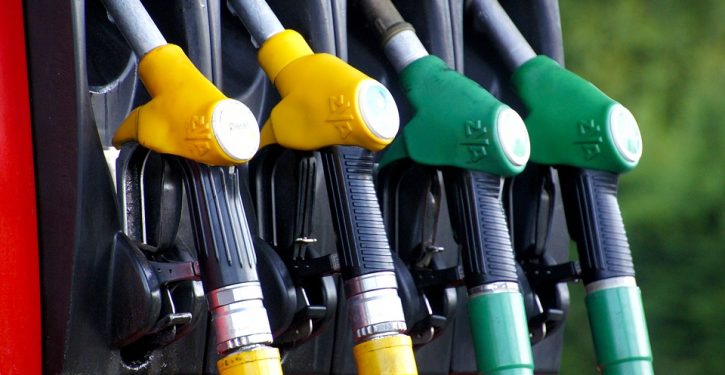
“For the first time ever, a gallon of regular gas now costs $5 on average nationwide,” reported CNN on January 11. “Gas prices have been rising steadily for the last eight weeks, and this latest milestone marks the 15th straight day that the AAA reading has hit a record price, and the 32nd time in the last 33 days.” Around “10% of stations across the nation are charging more than $5.75 a gallon.”
The average price for gasoline could be around $6 later this summer, notes Tom Kloza, global head of energy analysis for the Oil Price Information Service. “Anything goes from June 20 to Labor Day,” Kloza he said, due to growing demand for gas as people hit the road for long-planned vacations. “Come hell or high gas prices, people are going to take vacations.” The highest statewide average is in California, where the average is at least $6.43 a gallon. In one California county, gas prices are closer to $10.
CNN says that there are “signs that people are starting to cut back on their driving in the face of the higher prices, but it’s still a modest decline. The number of gallons pumped at stations in the last week of May was down about 5% from the same week a year ago.”
The Biden administration caused gas prices to rise even faster by taking actions to cut oil production, making oil more scarce. On taking office, Biden issued a slew of executive actions suspending oil and gas leases, as CNBC reported in January 2021.
Earlier this year, Biden celebrated the high gas prices Americans now face as part of an “incredible transition” away from fossil fuels. A recent poll found that a majority of Americans — including most independents — think the Biden administration has intentionally taken actions that increase gas prices, in order to push Americans away from using fossil fuels.
The public has become become angry over high gas prices, and Biden’s approval ratings have fallen in the polls. In response, Biden has belatedly taken steps to distance himself from rising gas prices, such as releasing gas from the Strategic Petroleum Reserve. But As the Daily Caller reported, gas prices rose after every release of oil from the strategic oil reserve. That means the releases achieved nothing except leaving less in the reserve to cope with any future emergency.
As the Heritage Foundation observes, Biden earlier took many steps to reduce the supply of oil, which will keep oil prices high:
At first, Mr. Biden patted himself on the back for his plans to restrict oil and natural gas-based energy. Now that gasoline prices are really taking off, however, he denies that he has slowed domestic oil drilling.
But he has…..On Mr. Biden’s first day in office, he issued an executive order directing the Secretary of the Interior to put a …. moratorium on the Coastal Plain Oil and Gas Leasing Program. That program directs the Bureau of Land Management to lease certain lands in Alaska for oil and gas extraction.
A few days later, he issued another order “pausing” oil and gas leases on all public lands and waters.
According to the Bureau, Alaska’s Coastal Plain is “some of the most highly prospective land on Alaska’s North Slope.” It contains billions of barrels of oil and trillions of cubic feet of natural gas. It is a king’s ransom of energy wealth, and the law requires that the administration make it available for extraction….The result: Mr. Biden has unlawfully trapped much of America’s vast energy reserves behind a wall of bureaucratic red tape, leaving them unavailable now that the country needs them.
Biden may release some more oil from the Strategic Petroleum Reserve to make it look like he is trying to do something about gas prices. But the reserve is so tiny that it contains far less than a month’s worth of oil, too little to affect gas prices for long (a week ago, it had about 500 million barrels of oil in it).
It’s just too small to affect gas prices for even a few months, because Democrats blocked refilling and expanding the Strategic Petroleum Reserve in 2020, when oil was cheap enough to do that at little expense. In March 2020, President Trump proposed adding oil to the Strategic Petroleum Reserve when oil cost only $14 per barrel, but Democrats blocked him from doing that. Now, oil is more expensive, over $120 per barrel. Not buying oil back in 2020 cost the U.S. government the opportunity to make tens of billions of dollars reselling the oil today for at a profit of around $90 per barrel. That could have reduced the national debt, and had a modest effect on gas prices, too.
If Congress had authorized the purchase of several hundred million barrels of oil for $14 back in 2020, the federal government could sell that oil today for over $120 per barrel, making tens of billions of dollars in profits.
But the oil reserve is nowhere near full, and no effort was made to expand its capacity when oil was cheap. The Strategic Petroleum Reserve was already at its lowest level in 20 years, even before Biden’s most recent release of oil from the reserve. Critics have argued that Biden’s prior releases of oil were illegal under the 1975 Energy Policy and Conservation Act, because they weren’t in response to an emergency.



